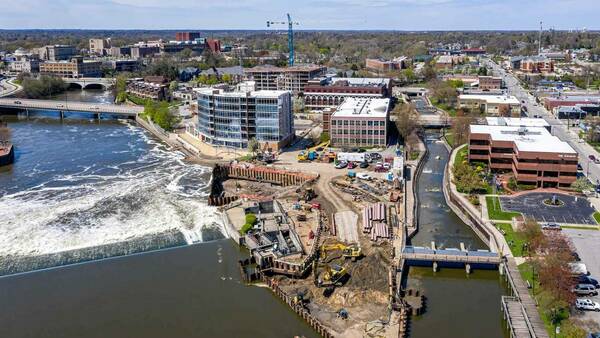Looking to the past to power the future
But as industry moved away from the river in search of cheaper and more abundant land, concern for the waterway as an economic asset — not to mention an environmental resource — faded, with devastating consequences.
At the lowest point, the area’s single most defining feature, the source of its name and fame, functioned as little more than an open sewer, channeling human and industrial waste downstream toward Lake Michigan.
This persisted into the 1970s, when, motivated by the environmental movement and a flood of federal money for economic and community development — so-called “urban renewal” — people returned to the idea of the river as a vital economic asset, worthy of a place of prominence in a rejuvenated downtown.
Over time, the east and west raceways were redeveloped, the former as a whitewater rafting course and the latter as a water feature for the city’s new convention center. The dam became the focal point of a rejuvenated riverfront, with parks, pathways and public art including River Lights, an interactive light sculpture.
Still, the use of the river as a source of power — at least downtown and with the existing infrastructure there — remained a thing of the past.
Until now.
Read the story
